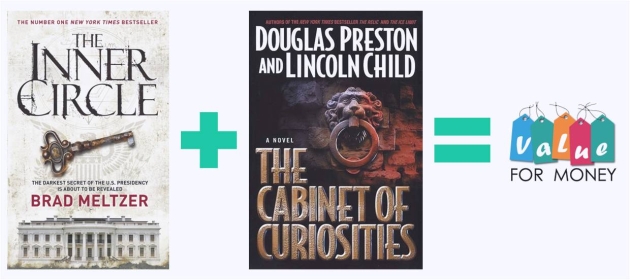 In their diatribes about the underbanked, unbanked and financial inclusion, many suppliers of financial services technologies to banks (aka “fincumbents“) and members of the digerati threaten banks with the risk of losing customers to prepaid cards, P2P lending platforms, money transmitters, and other types of fintechs.
In their diatribes about the underbanked, unbanked and financial inclusion, many suppliers of financial services technologies to banks (aka “fincumbents“) and members of the digerati threaten banks with the risk of losing customers to prepaid cards, P2P lending platforms, money transmitters, and other types of fintechs.
In their urge to dish out free, unsolicited advice, these self-appointed Saviors-of-Bankingdom constantly exhort banks into action and fight fintechs with slogans like “Innovate or be disrupted”, “Disrupt or die”, and so on.
I think they’re barking up the wrong tree.
Why?
Because banks are busy doing something else.
Like staying profitable.
According to Sheila Bair, “Many … ‘under-banked’ households once actually had traditional banking accounts”. They don’t any more because they’re unable or unwilling to pay checking, overdraft protection and other fees charged by banks. The former FDIC Chair and current Santander Group board member makes this point in her FORTUNE magazine article titled Watch out for those hidden fees in prepaid debit cards (subscription required or click here to download as PDF) to explain why the volumes of the under- and unbanked segments – 42.9% of the population according to the latest FDIC survey conducted in 2011 – are growing.
In India, the government’s push towards expanding formal financial services into the rural hinterland has met with tepid response. This is despite the fact that 70% of the Indian banking sector is state-owned. Notwithstanding the social agenda baked into their charters and periodic government diktats, banks have simply found it unprofitable to operate in smaller towns and villages. Thankfully, the government has realized that what’s good for politics is not necessarily good for business, and, according to news reports, has recently proposed to pay commissions to banks for pushing financial inclusion.
I see these as clear signs that the banking industry is
- emphasizing profits over revenues
- not interested in growth for the sake of growth
- not averse to shedding existing customers if that helps to bolster profits, in an apparent nod to the famous Pareto Principle: “If 80% of our profits come from 20% of our customers, why shouldn’t we shed the 80% of customers that contributes to only 20% of our profits?” More on this in my earlier blog post Analytics Or Hair Splitting?
When banks are not averse to shedding customers, it’s but natural that any threats of them losing customers will fall on deaf ears (or get lapped up enthusiastically as a good strategy to achieve their goals).
 That said, fincumbents can’t be blase about banks’ losing customers since a good portion of their revenues is linked to processing volumes of banks. If banks lose customers, their volumes will drop, which will lead to cratering of fincumbents’ revenues.
That said, fincumbents can’t be blase about banks’ losing customers since a good portion of their revenues is linked to processing volumes of banks. If banks lose customers, their volumes will drop, which will lead to cratering of fincumbents’ revenues.
In pursuit of their own growth, it’s but natural for marketers of fincumbents to urge banks to grow their portfolios aggressively. In an egregious example of this approach, a fincumbent CEO advises banks to enter subprime lending by – you guessed it – using his company’s software.
However, this strategy is unlikely to work since banks seem to be following exactly the opposite approach in their pursuit of profits over revenues (and also because it’s not a great marketing strategy to threaten your customers’ survival.)
So, what should fincumbents do?
Maybe they should drink some of their own innovation Kool-Aid to devise new engagement models whereby they don’t lose their revenues when banks prune their customer base. Profit-sharing is one option worth exploring, given that
- Financial services is the most profitable sector in FORTUNE 500 in 2013
- The sector’s profits are at near record levels, according to WSJ
- 6 out of 10 most profitable FORTUNE GLOBAL 500 corporations in 2015 are banks
Finserv is still very profitable. 6 out of 10 most profitable Fortune Global 500 corporations are banks. pic.twitter.com/qO98th3OdD
— GTM360 (@GTM360) September 11, 2015
While there are a few more approaches, my urge to dish out free, unsolicited advice ends here!
UPDATE DATED 16 AUGUST 2019:
The original post above was published in 2014 under the title “How Can Fintech Companies Grow When Banks Are Shedding Customers?” At the time, I was referring to suppliers of core banking, bill payment, mortgage origination and other financial services technologies to banks.
Basis subsequent nomenclature used by me, fincumbents is the correct label for these companies.
While both types of companies are engaged in financial services technologies, their raison d’être is very different.
Fincumbents v. Fintechs
Fincumbents: Traditional suppliers of financial services technologies to banks e.g. i-flex solutions / Oracle Financial Services Software (disclosure: my ex employer), FiServ, Jack Henry. They develop financial technologies but don’t use them. By charter, they’re B2B companies and suppliers of banks.
Fintechs: New age Direct-to-Consumer financial technology startups that sell bank accounts, loans and other financial products directly to end users e.g. Simple, OnDeck, SoFi. They use technologies developed by themselves. By charter, they’re B2C companies and competitors of banks.
To avoid any confusion, I’ve replaced the term “fintech companies” with “fincumbents” in the title and the body of the original post. Where the reference to fintechs remains, it’s because I’m indeed referring to the new-age B2C companies.


